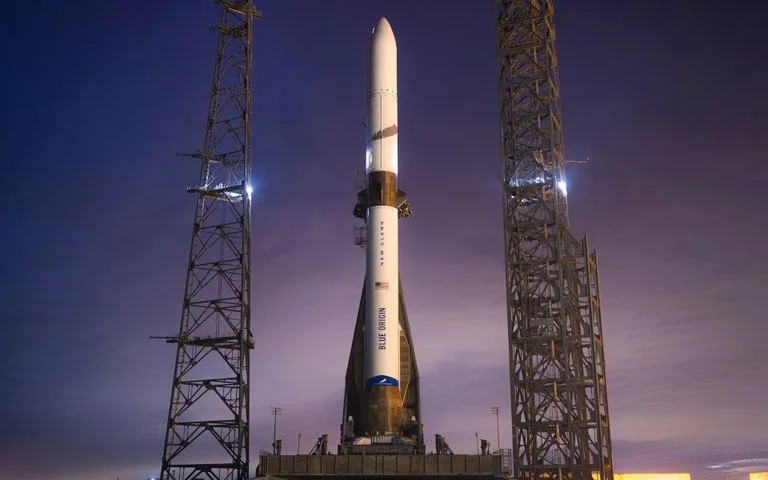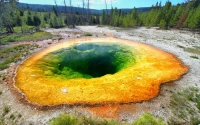Blue Origin's "Never Tell Me the Odds" Landing: A Giant Leap Towards a Martian Future
Okay, folks, buckle up. Because what happened with Blue Origin's New Glenn rocket isn't just another launch and landing – it's a freakin' paradigm shift. And I, for one, am absolutely buzzing with excitement about it.
The headlines are all focused on the successful landing of the "Never Tell Me The Odds" booster after launching NASA's ESCAPADE mission to Mars. Yes, the mission itself is incredible: twin spacecraft heading to the Red Planet to unlock the secrets of its atmospheric escape. But that landing? That's the real story. New Glenn Launches NASA’s ESCAPADE, Lands Fully Reusable Booster
Landing the Dream: Reusable Rockets and Martian Ambitions
We've seen reusable rockets before, of course. SpaceX has been doing it for years. But New Glenn is on a whole different scale. This isn't just about saving money (though that's huge!). This is about building the infrastructure for a sustained, vibrant presence in space, especially on Mars. Think of it like this: the Wright brothers proved flight was possible, but it took decades of refinement and infrastructure to build the modern airline industry. New Glenn's successful landing is a major step towards building that airline industry for space.
The fact that Blue Origin stuck the landing on the second try? That's audacious. That's the kind of "moonshot" mentality we need to truly become a spacefaring civilization. Dave Limp, CEO of Blue Origin, said it best: "It turns out Never Tell Me The Odds had perfect odds—never before in history has a booster this large nailed the landing on the second try." It's a bold statement, but you have to admire the confidence and, honestly, the sheer guts of the team.
One of the most exciting aspects of the mission is NASA's ESCAPADE. These twin spacecraft are designed to study how the solar wind interacts with Mars' atmosphere. See, Mars used to have a thick atmosphere and even liquid water on its surface. But over billions of years, the solar wind stripped away that atmosphere, turning Mars into the cold, dry desert we know today. Understanding this process is crucial for protecting our own planet and for making Mars habitable for future generations. According to acting NASA Administrator, Secretary Sean Duffy, "This heliophysics mission will help reveal how Mars became a desert planet, and how solar eruptions affect the Martian surface."

But here's the real kicker, the "Big Idea" that everyone seems to be missing: the ESCAPADE mission is using a novel trajectory that will allow for more flexible and frequent launches to Mars in the future. Instead of waiting for the "perfect" planetary alignment, ESCAPADE will loiter in Earth's orbit for almost a year before heading to Mars. As Robert Lillis, the principal investigator, put it, "This is an exciting, flexible way to get to Mars because in the future… we could potentially queue up spacecraft using the approach that ESCAPADE is pioneering." This is huge.
Imagine a future where we can launch missions to Mars on demand, without being constrained by planetary alignments. What does this mean for us? It means faster scientific discoveries, more opportunities for exploration, and a much quicker path to establishing a permanent human presence on Mars.
And let's not forget about the ethical considerations. As we venture further into space, we have a responsibility to protect other planets from contamination. I was particularly struck by the work of Denisse Aranda, a Blue Origin engineer who focuses on planetary protection. She's making sure that microbes from Earth don't contaminate other planets, and vice versa. It’s a critical, often overlooked aspect of space exploration. Alumna at Blue Origin worked on the New Glenn rocket that launched into space today
This level of care, combined with the "Never Tell Me the Odds" spirit, makes me incredibly hopeful. It reminds me of the early days of the internet when anything seemed possible. This is the kind of breakthrough that reminds me why I got into this field in the first place.
The Martian Frontier Beckons
The successful landing of New Glenn, coupled with the innovative ESCAPADE mission, marks the beginning of a new era in space exploration. The dream of a sustained human presence on Mars is no longer a distant fantasy, but a tangible goal within our reach.
So, What's the Real Story?
This isn't just about rockets; it's about humanity's future among the stars.










